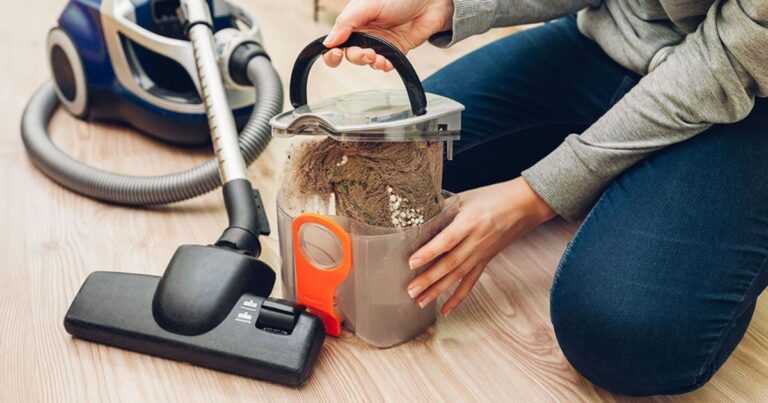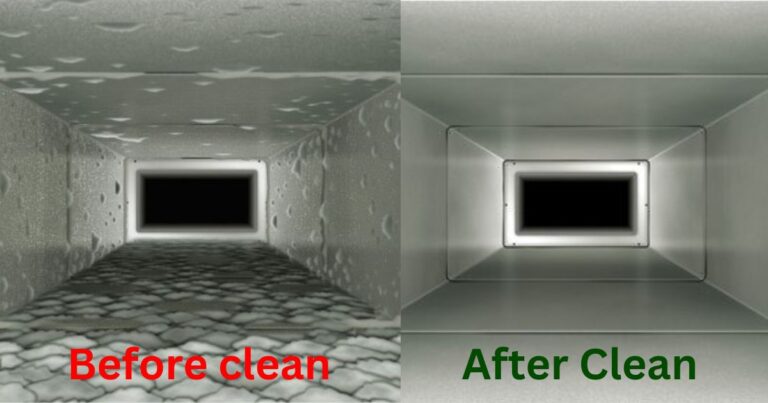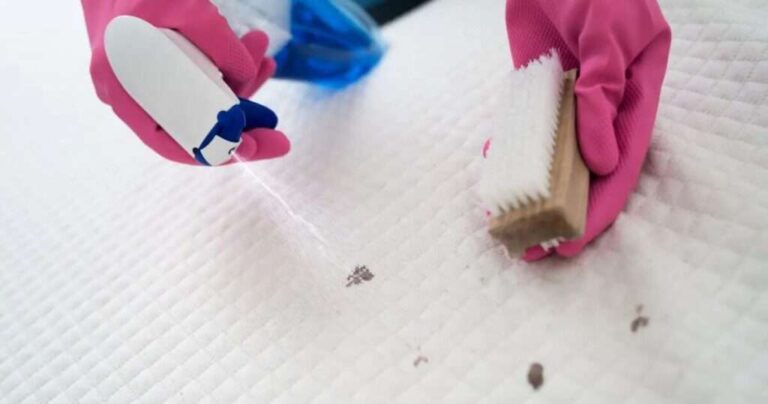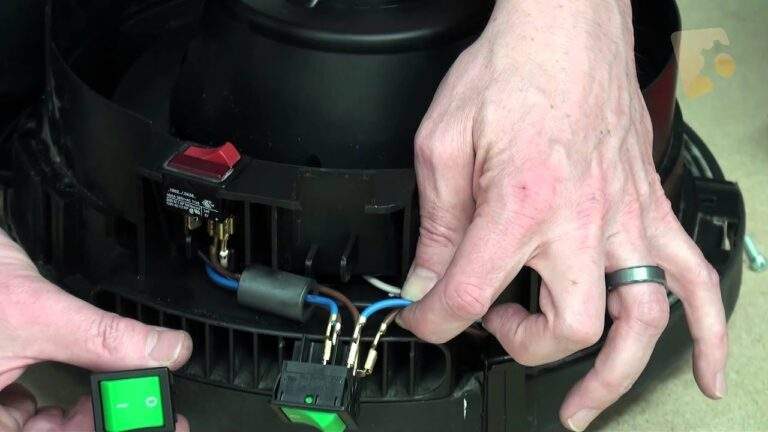Learn how these simple tools are revolutionizing home cleaning Does a vacuum cleaner work on a vacuum? Make your cleaning routine more efficient with a vacuum cleaner. When we think of using a vacuum cleaner, we usually imagine cleaning our homes or offices. But have you ever wondered if a vacuum cleaner would work in a vacuum? To understand the answer to this question, we need to delve into the concept of a vacuum and explore the physics behind vacuum cleaners.
Can a vacuum cleaner work in a vacuum?

Understanding the concept of vacuum
A vacuum, in scientific terms, refers to a space devoid of matter. It is an environment where the pressure is significantly lower than the surrounding atmosphere. In such conditions, without any air or particles present, sound doesn’t travel, and the normal laws of physics change.
Exploring the physics behind vacuum cleaners
A vacuum cleaner, on the other hand, is a device designed to create suction to remove dirt and debris from various surfaces. It works by utilizing the difference in air pressure between the vacuum and its surroundings. The vacuum cleaner’s electric motor creates a stream of air, which generates low pressure inside the vacuum cleaner. This difference in pressure forces air, along with the dirt and debris, to enter the cleaner through an intake port.
Once inside the vacuum cleaner, the dirt and debris are collected in either a vacuum bag or a dust container. The air, having served its purpose, is then expelled through an exhaust port, back into the surrounding environment.
Potential challenges in using a vacuum cleaner in a vacuum
Although a vacuum cleaner relies on air pressure to create suction, using it in a vacuum presents several challenges. In the absence of air, there is no medium through which the suction can be created. The vacuum cleaner’s mechanism depends on the movement of air particles to generate the pressure difference necessary for effective cleaning.
Additionally, without any air to carry the dirt and debris, the vacuum cleaner would struggle to collect and contain the waste. Furthermore, the absence of air pressure inside the vacuum would render the intake and exhaust ports ineffective, as they rely on the flow of air to function properly.
What are the different types of vacuum cleaners?
Upright vacuum cleaners
Upright vacuum cleaners are the most common and traditional type of vacuum cleaners. They are designed with a motorized brush and a handle, allowing the user to operate the vacuum cleaner while standing upright. These cleaners are suitable for most flooring types and come with various attachments for specialized cleaning tasks.
Canister vacuum cleaners
Canister vacuum cleaners consist of a separate canister unit connected to a wand with a cleaning head. The canister houses the motor and filters, while the wand and cleaning head allow for flexibility in reaching tight spaces and cleaning stairs. Canister vacuums are known for their versatility and are particularly effective on hard floors and low-pile carpets.
Central vacuum systems
Central vacuum systems are built-in cleaning systems typically installed in residential or commercial buildings. They consist of a central power unit connected to a network of tubes installed in walls or under the floors. These systems offer convenience and powerful suction, as the dirt and debris are transported through the network of tubes and collected in a central container, usually located in a garage or utility room.
How does suction work in a vacuum cleaner?
The role of air pressure in creating suction
As mentioned earlier, the suction power of a vacuum cleaner is generated through the pressure difference between the vacuum cleaner and the surrounding environment. By creating a lower pressure inside the cleaner, the higher pressure outside pushes the air, dirt, and debris into the intake port, resulting in effective cleaning.
The intake and exhaust ports in a vacuum cleaner
The intake port in a vacuum cleaner is the opening through which dirt and debris enter the device. It is designed to capture particles and direct them into the vacuum bag or dust container. The exhaust port, on the other hand, expels the filtered air back into the environment after the particles have been collected.
Suction power and its impact on performance
The suction power of a vacuum cleaner is determined by the strength of the electric motor and the design of the cleaner’s components. A higher suction power allows the cleaner to effectively pick up dirt and debris from various surfaces. It is important to note that different vacuum cleaners have varying levels of suction power, which can impact their overall performance.
Can a robot vacuum work in space?
The challenges of using robot vacuums in space

While robot vacuums have gained popularity for their convenience and autonomous cleaning capabilities, using them in space presents unique challenges. In a microgravity environment, robot vacuums would have difficulty effectively navigating without the assistance of gravity. Without gravity, the debris would remain suspended in the air, making it challenging to collect efficiently.
Alternative cleaning methods in zero gravity environments
In zero gravity environments, such as spacecraft or space stations, alternative cleaning methods are employed. These methods often involve specialized filtration systems to capture dust and particles, as simply using a conventional vacuum cleaner would not be feasible.
Potential advancements in space cleaning technology
With the advancements in technology, scientists and engineers are continuously working on developing innovative cleaning solutions for space environments. From robotic systems capable of handling zero gravity to more efficient filtration systems, the goal is to ensure cleanliness and hygiene in confined, extraterrestrial habitats.
What are the main components of a vacuum cleaner?
Understanding the anatomy of a vacuum cleaner
A typical vacuum cleaner consists of several essential components. These include the motor, filters, bag or dust container, hoses or attachments, and various control mechanisms. Each component plays a vital role in the overall functionality of the vacuum cleaner.
The importance of filters and bags
Filters are essential in trapping dirt, dust, and allergens, preventing them from being released back into the environment. Some vacuum cleaners use High-Efficiency Particulate Air (HEPA) filters, which are capable of capturing microscopic particles. Vacuum bags or dust containers collect the debris, making it convenient for disposal.
Maintenance and cleaning of vacuum cleaner parts
To ensure optimal performance, regular maintenance and cleaning of the vacuum cleaner’s components are necessary. This includes emptying or replacing the bag or dust container, cleaning or replacing filters, checking for blockages in hoses, and inspecting the motor and attachments for any damage. Proper maintenance prolongs the lifespan of the vacuum cleaner and ensures its efficiency.
Why do some vacuums have different cleaning abilities?
Factors affecting cleaning performance
Several factors can influence the cleaning abilities of vacuum cleaners. These include suction power, airflow, brushes or agitators, and the type of surface being cleaned. Vacuum cleaners with higher suction power tend to remove more dirt and debris, while effective airflow ensures efficient collection. The presence of brushes or agitators helps loosen and lift dirt from carpets, enhancing the cleaning process.
Variations in suction power and airflow
Not all vacuum cleaners are created equal in terms of suction power and airflow. Different models and types of vacuum cleaners offer varying levels of suction power and airflow, depending on their design and intended use. For instance, upright vacuums may have higher suction power for deep cleaning carpets, while handheld vacuums prioritize portability over suction strength.
The impact of carpet type on vacuum cleaner effectiveness
The effectiveness of a vacuum cleaner can also depend on the type of carpet being cleaned. Different carpet types, such as low-pile or high-pile carpets, may require specific vacuum cleaner settings or attachments to ensure thorough cleaning. The ability of the vacuum cleaner to effectively remove dirt and debris from the carpet surface contributes to its overall cleaning abilities.
FAQ.Frequently Asked Questions-Does a vacuum cleaner work on a vacuum?
Can a vacuum cleaner work in a vacuum?
No, a vacuum cleaner cannot work in a vacuum. Although the name may suggest otherwise, vacuum cleaners are designed to work in an atmosphere where air is present. Without air, there would be no medium for the vacuum cleaner to create suction and effectively pick up dirt and dust.
What is a central vacuum system?
A central vacuum system, also known as a central vac, is a built-in vacuum system that is installed within a building. It consists of a central unit, usually located in a basement or garage, connected to a network of tubing throughout the building. In each room, there are inlet valves where a vacuum hose can be attached to activate the system.
What are the parts of a vacuum cleaner?
The main parts of a vacuum cleaner include the motor, which powers the suction, the brush roll or beater bar, which helps agitate and loosen dirt, the dirt container or bag, where the dirt is collected, the filters, which trap dust and allergens, and the various attachments, such as the crevice tool and upholstery brush.
How do vacuum cleaners work?
Vacuum cleaners work by using suction to pull dirt and debris into a dust container or bag. The suction is created by a motor that powers a rotating fan, which creates a low-pressure area inside the vacuum. This low-pressure area sucks in the dirt and dust through the intake port and into the dust container or bag.
Can a vacuum cleaner pick up dirt in space?
No, a vacuum cleaner cannot pick up dirt in space. In space, where there is no air, there is no medium for the vacuum cleaner to create suction. Without suction, the vacuum cleaner is unable to pick up dirt or perform its cleaning function.
What are the variables in a vacuum cleaner?
The variables in a vacuum cleaner refer to the different features and specifications that can vary between different models and brands. These variables may include the power of the motor, the type of filters used, the size and capacity of the dirt container or bag, the length and flexibility of the hose, and the availability of different attachments.
How can I clean my floors with a vacuum cleaner?
To clean your floors with a vacuum cleaner, simply turn on the power and run the nozzle or brush roll over the surface of the floor. The suction created by the vacuum cleaner will pull in any dirt and debris, leaving your floors clean and free of dust.
Is it necessary to use a bagless vacuum cleaner?
Using a bagless vacuum cleaner is not necessary, but it can be beneficial for some users. Bagless vacuum cleaners have a dust container that can be emptied and reused, eliminating the need to purchase and replace vacuum cleaner bags. However, bagless vacuum cleaners may require more frequent emptying and cleaning of the dust container to maintain optimal performance.
How can I look inside a vacuum cleaner?
To look inside a vacuum cleaner, you can start by unplugging the vacuum and ensuring it is turned off. You can then remove any attachments or accessories that may be connected to the vacuum. By removing screws or clips, you may be able to access the inside of the vacuum cleaner and inspect its components.
What happens to the dirt and dust inside a vacuum cleaner?
The dirt and dust that is collected by a vacuum cleaner is usually stored in a dirt container or bag. When the container or bag becomes full, it needs to be emptied to maintain the vacuum cleaner’s performance. The dust and dirt can be disposed of in a trash bin or appropriate waste management system.
In conclusion,
The concept of a vacuum cleaner working in a vacuum is seemingly contradictory. A vacuum cleaner relies on the presence of air to create suction and effectively remove dirt and debris from surfaces. In a vacuum, however, there is an absence of air or any other gas particles, rendering the functionality of a typical vacuum cleaner useless.
Without air or gas particles to create the necessary pressure differential, the suction power of a vacuum cleaner would be significantly diminished or nonexistent in a vacuum environment. Thus, it can be concluded that a vacuum cleaner would not be able to operate effectively or at all in a true vacuum







